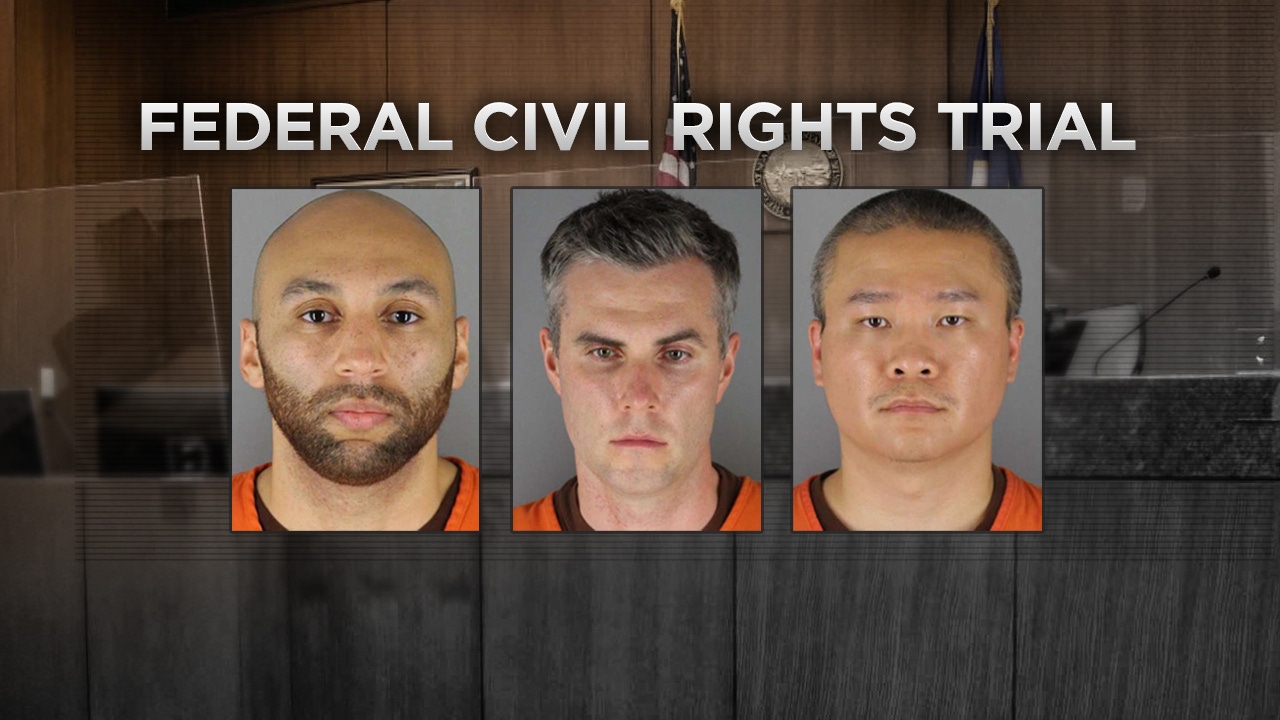Floyd’s medical condition, officers’ communication highlighted on Day 3 of federal trial
[anvplayer video=”5085850″ station=”998122″]
Jurors heard a lot of testimony about George Floyd’s condition and the communication by the three former Minneapolis police officers charged in his death on the third day of their federal trial.
Hennepin County Medical Center paramedic Derek Smith was the first witness to testify Wednesday, explaining that he had “no information” when he arrived at the scene on May 25, 2020, and that “to me, more information could’ve been provided.”
That became somewhat of a theme throughout the day, as Minneapolis Fire Captain Jeremy Norton, who responded to the scene that day, also told jurors that he and his crew had “no information” when they got to the scene. Additionally, Norton noted Thao was confused why Norton’s fire crew was even at the scene because only EMS was needed, which Norton then explained to Thao he was. However, the fire crew wasn’t told anything about the patient they needed to treat or where he was.
Genevieve Hansen, an off-duty Minneapolis firefighter who came upon the scene, said she knew there was poor communication with dispatch because she saw her firefighter colleagues arrive and not have any idea that Floyd had already been taken a couple blocks away by an ambulance.
RELATED: KSTP’s full George Floyd coverage

Hansen also testified that was “immediately concerned” when she saw three officers on top of Floyd and became more alarmed after seeing Floyd’s condition.
“His face looked really swollen and smashed to the ground, he wasn’t moving, he was definitely unconscious,” Hansen recalled. She added that she identified herself as a firefighter and wanted to provide aid to Floyd, or at least check his pulse, but Thao dismissed her and told her not to get involved and stay on the sidewalk.
[anvplayer video=”5085770″ station=”998122″]
The defense again tried to portray the scene as dangerous and hostile, although Hansen pushed back on that a bit, saying she never heard anyone be physically threatening toward the officers. The defense also pointed out Hansen had told the FBI on May 28, 2020, that it was necessary for the ambulance to take Floyd a few blocks away for treatment because the scene wasn’t safe, but she replied, “the scene wasn’t safe for George Floyd.”
Defense attorneys also tried to point out that Floyd may have experienced “excited delirium,” which Smith noted can give subjects “superhuman strength” briefly but can also lead to cardiac arrest and death. The defense attorneys pointed out that Floyd fit many of the indicators for excited delirium, which prosecutors pushed back on. But Norton perhaps dealt a bigger blow to that argument by calling excited delirium a “catch-all phrase” used for anyone acting erratically after being restrained and actually suggested being restrained caused excited delirium. Norton and Smith did both note that someone experiencing excited delirium could have used drugs.
After Judge Magnuson dismissed court a bit early, Kueng’s attorney requested a mistrial for the third time, arguing that prosecutors are leading witnesses and violating a court order. Magnuson quickly denied that motion.
Court is set to reconvene at 9:30 a.m. Thursday.
Click here to read more in-depth notes from Wednesday’s proceedings.